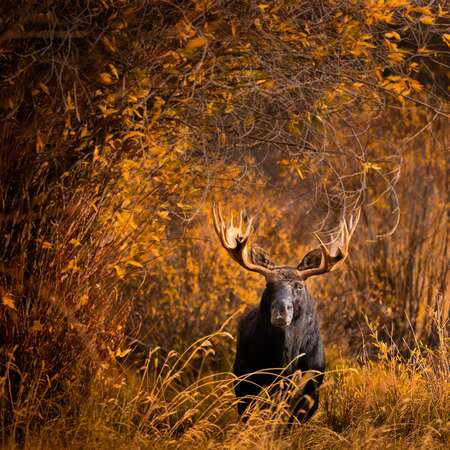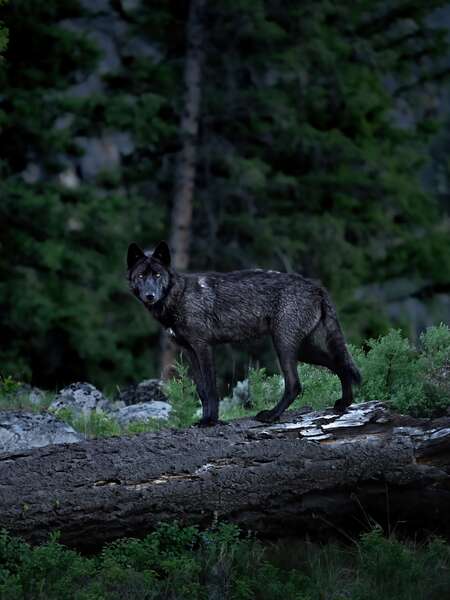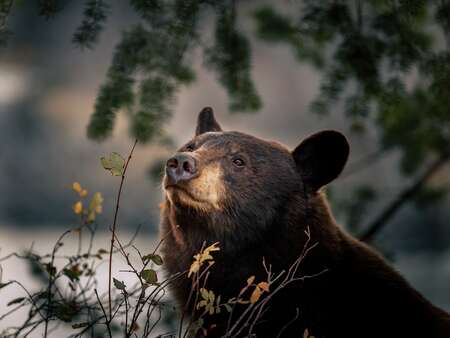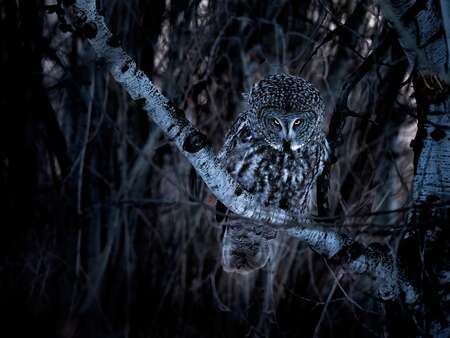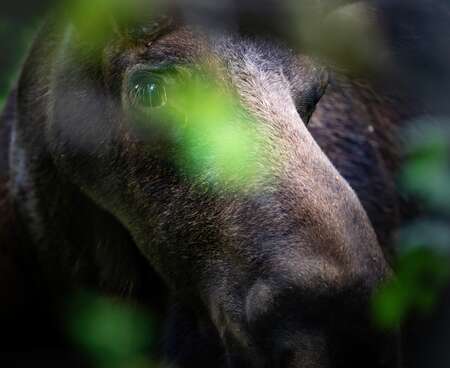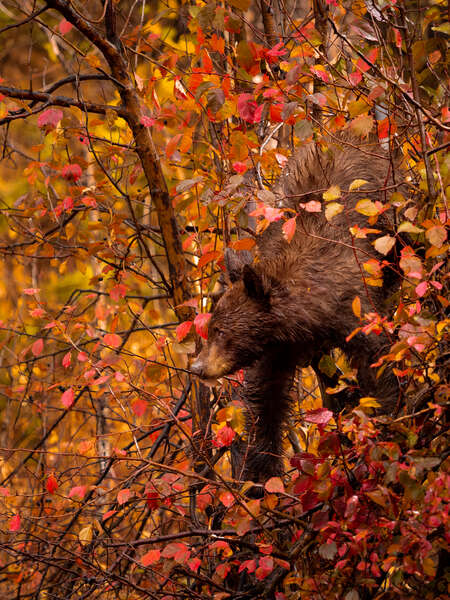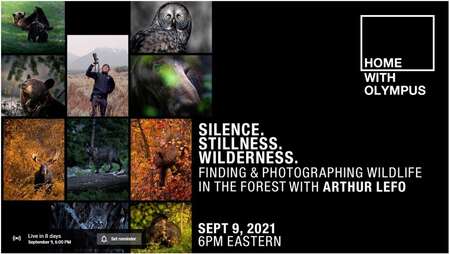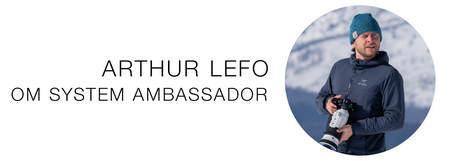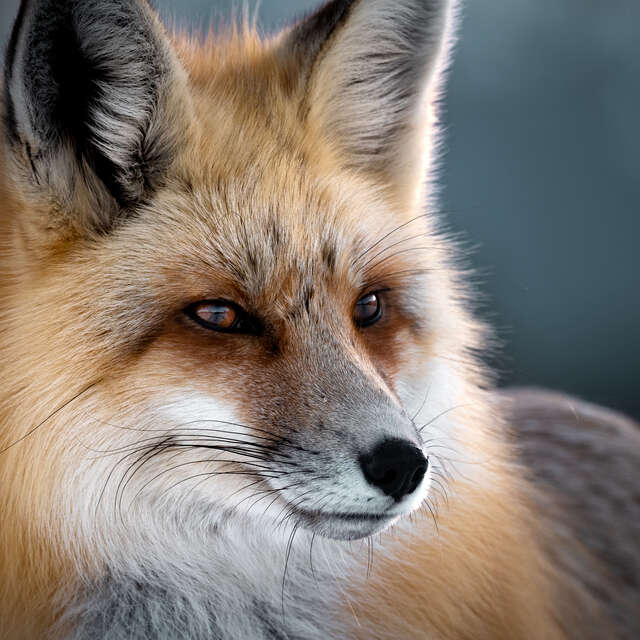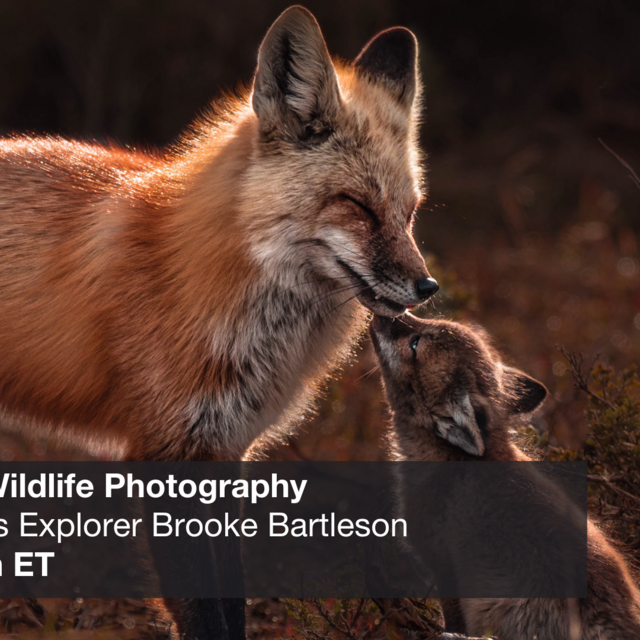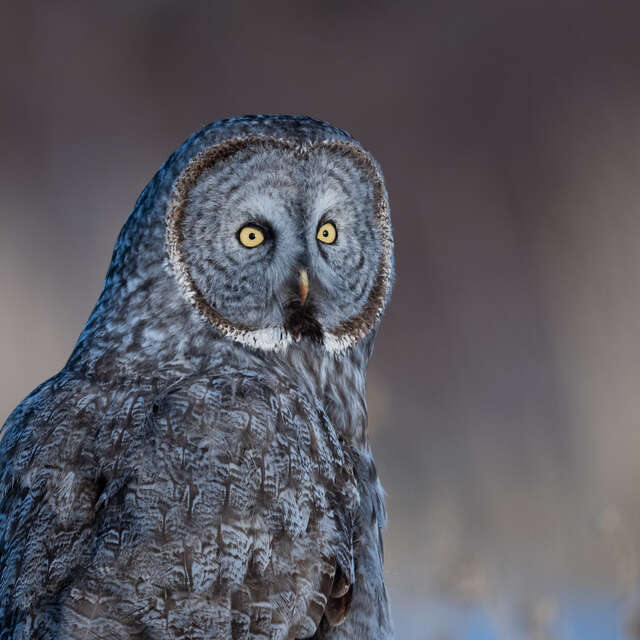You breathe deeply. As you look around, you notice soft sunbeams slipping through fissures in the foliage up above. Surrounded by the soothing sounds of the swaying leaves, you let yourself drift off into the waves of wilderness around you.
As wildlife photographers, the forest provides us with some of the most interesting subjects and unique compositional opportunities. Finding and photographing wildlife in the forest can be challenging, yet incredibly rewarding and soul-soothing.
Come Prepared
The forest is a diverse and exciting ecosystem to photograph wildlife. From the echoing elk bugles in dry pine woodlands of Colorado to the huffing breath of bears in thick humid bogs of southeast Alaska, forests present a myriad of species and conditions to create unique and compelling images. As with any outdoor adventure, it’s important to know your objectives and what challenges the environment might present you.
- Dress for success: Hiking in overhanging trees and dense brush can make anticipating weather challenging and present a variety of different plants and insects to navigate through. Wear long sleeves and pants, waterproof shoes or boots, and bring layers for the cold and rainproof outerwear in the event you get caught in a storm. Extra socks are always a good idea if you might encounter wet conditions.
- Cameras need love too: You trek for miles through the woods in the rain, find a beautiful animal to photograph, only to find yourself ridden with a lens covered in fog and nothing to clean it with. Animal sightings in the forest can be fleeting, so you have to be ready to shoot regardless of the conditions. I always like to bring a camera kit equipped with two large lens cloths, an air blower, and neoprene sleeves for my spare lenses to keep them dry and free of moisture in my pack. Don’t forget to hike with your lens hood on so you can be ready for action in a split second without risking your lens getting dirty or wet!
Let The Forest Find You
Silence. Stillness. Wilderness. This is the essence of the forest. This all-encompassing feeling of finding yourself surrounded by a new world is why we (and the animals alike) seek the peaceful refuge of the woods.
As wildlife photographers, it can be easy to let ourselves become consumed by the latter part of the term: photographers. Of course, we all want to get “the shot” and we usually set off with an idea in mind, a dream image we would like to create. It so happens that by clinging to this thought we often set ourselves back in our creative process, losing track of our surroundings and the present moment at hand. When I set off on any forest adventure, I like to remind myself of the former part of the term: wildlife (wild, and life). Being mindful of the details in the wild and of the life that flourishes around me helps me remain present, opportunistic, and respectful of the environment.
Before entering the woods, I make a mental note of the world I am entering: the animals’ home. We exert respect and kindness when we visit the homes of our human friends, and our animal friends deserve the same treatment. As a result, my first and foremost goal on any adventure through the woods is to disturb its peace as little as possible and to leave it exactly the way I found it: wild and beautiful. I take a deep breath, and with my intentions centered and my mind present in the moment, I move on to my next objective: finding wildlife.
Where The Wild Roams Free
A cracking branch echoes through the hollows of the woods. A sudden rustle in a bush startles you in your steps. A soft animal print in the mud reminds you once again that you are in their home. Wilderness, like wildlife itself, is full of wonder and inspiration. Here in the forest, the wild roams free… and so must we.
As I begin my journey through the woods I like to set my expectations for seeing animals low, and my expectations for enjoying nature high. I find that my greatest successes in wildlife photography have come, to some degree, from luck. As wanderers of the wild, we have the power to create our own luck by setting ourselves free from a preconceived narrative and letting our own story come to life naturally instead. Once I’m fully present in the moment, I let a few key things guide me through my search for critters.
- Know your forest: From the Spanish moss-covered oaks in the swamps of Florida to the boreal forest of central Alaska, forests are home to an incredibly diverse range of flora and fauna. I try to learn as much as possible about the forest I am exploring before heading out. What animals live here? Do some animals give us hints to the presence of others? A chirping squirrel, for example, often gives way to the presence of an intruder where I live in Jackson Hole. What time of day are certain animals active, and are their whereabouts seasonally varied? The more you can learn at home before setting off and then applying this knowledge in the field, the more you will find yourself settling into the present moment and seeing things as they are that day instead of wandering around simply hoping to see something.
- Follow the light: The forest presents challenges in photographing wildlife that we sometimes cannot work around. Light is one of those things. We can have the most amazing encounter with an animal and never have a worthy opportunity to capture it powerfully if the light isn’t right. And so, I follow the light. On gloomy days or early mornings and later evenings, I like to focus my attention on forest clearings, meadows, and river banks. Animals are more likely to frequent these areas during times like these, and simultaneously I can maximize the amount of light I have to create a compelling image. On bright bluebird days and during the middle hours of the day, I tend to do the opposite and seek refuge in the shadows of the woods much like the animals would. Follow the light, and you will maximize not only your opportunity to see wildlife but also to set yourself up for success in creating a beautiful image.
- Animals leave clues: My favorite benefit of slowing myself down and focusing on the present moment is having increased awareness of my surroundings. Animals leave clues in the forest: tracks in the mud, beds from where they have spent the night before, shrubs that are cleared of twigs or bushes that have had their berries consumed. Think of how recent these clues are. Is the track you found in dried-out mud, or is water still seeping into its crevices? Knowing your forest will help you keep a keen eye on what to look out for, and following these clues will help you find the critters too. Sometimes, it means I scout the first day and come back later with a better idea of where to look. That’s ok, what’s the rush? Just being here is a blessing in and of itself.
- Silence is golden: Part of exhibiting respect for the animal’s home is to disturb it as little as possible, and silence goes hand in hand with that. Sometimes, walking around isn’t the best solution. If I find myself somewhere that seems logical for an animal to frequent and where I’ve found clues in the past, I like to sit quietly and wait. In many cases, wildlife will avoid human contact and the best way to maximize your luck is simply to be silent. Beyond the benefit this provides to the peace of the animals, it also gives us another opportunity to come back to the present moment and enjoy nature for what it is: silence, stillness, wilderness.
- Trails and off-trail travel: Part of our role while exploring the forest is to be stewards for its longevity. Off-trail travel is an exciting part of finding wildlife, but it isn’t always acceptable. Knowing your forest also means knowing of any rules that might be in place to protect it. In many national parks, off-trail travel is strictly prohibited. In other more remote forests on public land, it may be permitted. If it is allowed, I still try to continuously think about what I am hiking through to avoid harming it. Try to stick to dirt, rocks, and well-used game trails. Avoid busting through dense bushes, breaking branches, or walking on sensitive plant life such as alpine tundra mosses and flowers.
Getting The Shot
The time has come. You’ve spent hours in the forest, listening to the sounds, learning from your surroundings, being thankful for the opportunity to simply exist in this wonderful world. Suddenly, something catches your attention out of the corner of your eye: a bull moose comes into view on the far side of the meadow where you’ve been waiting. It spends a few moments in view before drifting off into the woods just as quietly and peacefully as it emerged. Wildlife sightings in the forest can be fleeting and magical experiences. It’s important that you are ready to get the shot at any moment, all while keeping in mind the comfort of the animal.
- Camera body and lenses: Part of photographing wildlife ethically in a forest setting is keeping a respectful and safe distance from your subjects. This means a telephoto lens is essential. My preferred lenses for this kind of setting are the M.Zuiko 40-150mm F2.8 PRO and 300mm F4.0 IS PRO. Using a weather-proof body with at least 20 megapixels and useful tech features such as Pro Capture Mode is essential as well, as it will allow you both to crop into the image in post-processing and avoid missing the split-second moment an animal looks directly at you. I have really enjoyed shooting with the OM-D E-M1 Mark III and E-M1 Mark II for these reasons.
- Composing the shot: Any time you find yourself sitting and waiting in the forest, think about your surroundings and how you could use them to your advantage in framing an image in an interesting way. Think about creating depth in your image, using a low point of view at or below the animal’s eye level to enhance the effect of the foreground, creating distance between you and your subject. Be creative with your surroundings, like using the bokeh of a tree in the foreground to give an image a mysterious feel and make the animal look like its emerging from the woods. Blurry objects in your frame help create depth and naturally draw the eye to the subject in focus.
- Aperture, Shutter Speed, ISO: Anytime you’re shooting on the move, it’s a good idea to keep your camera in Aperture Priority mode. This allows you to worry about one less setting and shortens your response time in the event something pops up unexpectedly. It’s also a great way to get practice for understanding how your camera reacts to different lighting situations in dynamic environments. Keep your aperture between F2.8 and F4 to give your subject some pop against blurry backgrounds. You can also raise it to F5.6 when you want more of an animal in focus or to give more detail to your background. As for shutter speed, I usually go no lower than 1/400s when I’m shooting most wildlife. When subjects are on the move, I prefer raising it to 1/800s, sometimes more. As you enter an area with new lighting, test out your shutter speed by taking a quick sample shot of a darker object. If your shutter speed is too low, be proactive and bring up the ISO so that it’s ready to go in a split second.
- Focus settings: Single autofocus for still subjects gives you the sharpest image possible. For subjects on the move, I opt for continuous autofocus or continuous tracking autofocus. I have my camera body mapped so that the lever on the back of the camera switches between single and continuous focus modes so I can react quickly on the fly.
Instagram: @arthurlefo
Arthur is a wildlife and conservation photographer based out of Jackson Hole, Wyoming. In a world ever more disconnected from wilderness, Arthur strives to share intimate moments with wildlife and landscapes alike to open the public eye to the beauties and harsh realities of our natural world. His passion lies in North American mammals and high latitude regions such as Alaska and Greenland. Outside of photography, he is an accomplished tour guide and fly fisherman and loves to unwind listening to groovy tunes.
